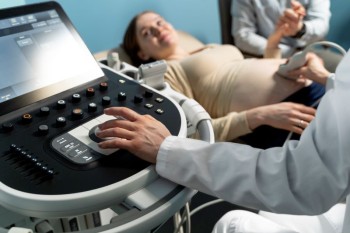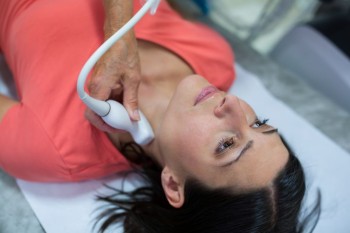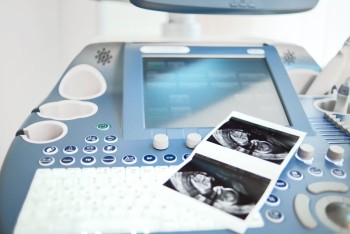
Both Breast Ultrasonography, commonly known as USG, and Sono Mammography are advanced imaging techniques designed to visualize and analyze breast tissue.
Ultrasound / USG Both Breast or Sono Mammography in India with Cost
USG Both Breast or Sono
Mammography in Detail: Illuminating Breast Imaging for Comprehensive Health
In the realm of breast health and diagnostics, both
Breast Ultrasonography (USG) and Sono Mammography stand as essential tools for
detecting, evaluating, and monitoring breast conditions. This comprehensive
guide delves into the significance, procedures, and invaluable insights
provided by USG Both Breast and Sono Mammography in ensuring comprehensive
breast health.
Introduction
Both Breast Ultrasonography, commonly known as USG, and Sono Mammography are advanced imaging techniques designed to visualize and analyze breast tissue. These diagnostic tools play a crucial role in early detection, assessment, and monitoring of breast conditions, contributing to comprehensive breast health management.
Understanding USG Both
Breast and Sono Mammography
USG Both Breast: Utilizes sound waves to create real-time images
of breast tissue, offering detailed views of structures that may not be as
clearly visible through other imaging methods.
Sono Mammography: Also known as Breast
Ultrasound or Breast Sonography, Sono Mammography specifically focuses on
evaluating breast tissue using ultrasound technology.
Importance in Breast Health
Both USG and Sono Mammography serve as vital tools in breast health, aiding in the identification and assessment of various conditions, including cysts, tumors, and abnormalities. They are particularly valuable in complementing mammography and providing additional insights, especially in cases where mammography alone may be insufficient.
Preparation for the Procedures
Preparation for USG Both Breast and Sono Mammography is generally straightforward. Patients are advised to wear comfortable clothing, and for USG, a water-based gel is applied to the breast area to enhance sound wave transmission. Sono Mammography is non-invasive and requires no special preparations.
Procedure: A Closer Look
at Breast Tissue
USG Both Breast:
Gel Application: A clear gel is applied to the breast, aiding in
the transmission of sound waves.
Transducer Movements: A handheld
device, called a transducer, is gently moved over the breast area, emitting
sound waves that create detailed images.
Sono Mammography:
Patient Positioning: The patient is
positioned comfortably, and the ultrasound transducer is moved across the
breast to capture images.
Real-time Imaging: Sono
Mammography provides real-time images of breast tissue, allowing for dynamic
evaluation.
Assessment Areas in
Breast Imaging
Both USG Both Breast and Sono Mammography focus on assessing various aspects of breast tissue, including:
Cyst Identification: Detecting and
characterizing fluid-filled cysts within the breast.
Tumor Visualization: Visualizing
solid masses or tumors that may be present in the breast.
Structural Evaluation: Assessing the
architecture and structure of breast tissue for abnormalities.
Benefits of USG Both
Breast and Sono Mammography
Enhanced Imaging: Both techniques offer additional perspectives and
clarity, especially in cases where mammography alone may present limitations.
Non-Invasiveness: Both procedures are
non-invasive and do not involve exposure to ionizing radiation.
Comprehensive Evaluation: Together, USG
Both Breast and Sono Mammography provide a comprehensive assessment of breast
health, ensuring a more thorough evaluation.
Risks and Considerations
Both USG and Sono Mammography are generally considered safe, with minimal risks. They serve as valuable diagnostic tools, especially for individuals with specific breast health concerns.
Clinical Applications
USG Both Breast and Sono Mammography are utilized in various clinical scenarios, including:
Breast Cancer Screening: Offering
additional insights for individuals with dense breast tissue.
Breast Health Monitoring: Periodic
evaluations for individuals with a history of breast conditions or treatments.
Diagnostic Investigations: Assessing
abnormalities identified through clinical examinations or other imaging methods.
Expert Perspectives
Radiologists and breast health specialists emphasize the complementary roles of USG Both Breast and Sono Mammography in enhancing breast health diagnostics. Their expertise contributes to a nuanced interpretation of imaging results.
Technological Advancements
Ongoing advancements in ultrasound technology contribute to the precision and clarity of both USG and Sono Mammography, ensuring more accurate and detailed breast imaging.
Patient Experience
Patients generally find both USG and Sono Mammography to be well-tolerated procedures. The non-invasive nature of these techniques contributes to a positive patient experience during breast health evaluations.
Conclusion
In conclusion, USG Both Breast and Sono Mammography play integral roles in breast health, offering valuable insights for the detection and assessment of various conditions. The synergy between these diagnostic tools contributes to a comprehensive approach in ensuring breast health and early detection of abnormalities.
Frequently Asked
Questions (FAQs) - USG Both Breast and Sono Mammography
1. What is the primary difference between USG Both Breast and Sono Mammography?
USG Both Breast utilizes sound waves for real-time imaging, providing detailed views of breast structures. Sono Mammography specifically focuses on breast evaluation using ultrasound technology, offering dynamic insights.
2. Are these procedures recommended for breast cancer screening?
Yes, both USG Both Breast and Sono Mammography are valuable in breast cancer screening, especially for individuals with dense breast tissue.
3. Is there any preparation required before undergoing these procedures?
Minimal preparation is needed. For USG, a water-based gel is applied to the breast, while Sono Mammography is non-invasive and requires no special preparations.
4. Are there any risks associated with USG Both Breast and Sono Mammography?
Both procedures are generally considered safe, with minimal risks. They do not involve exposure to ionizing radiation, making them suitable for regular breast health evaluations.
5. Can these imaging techniques detect cysts in the breast?
Yes, both USG Both Breast and Sono Mammography are adept at identifying and characterizing fluid-filled cysts within the breast.
6. How often should individuals undergo USG Both Breast and Sono Mammography for breast health monitoring?
The frequency of these procedures depends on individual health factors and recommendations from healthcare providers. Regular screenings may be advised for those with specific breast health concerns.
7. Do these procedures replace traditional mammography for breast cancer detection?
No, USG Both Breast and Sono Mammography are often used as complementary tools to traditional mammography, providing additional insights, especially in cases of dense breast tissue.
8. Is there any discomfort associated with these procedures?
Patients generally find both USG and Sono Mammography to be well-tolerated. The procedures are non-invasive and do not cause significant discomfort.
9. Can these imaging techniques be used during pregnancy or while breastfeeding?
Yes, both USG Both Breast and Sono Mammography are considered safe during pregnancy and while breastfeeding, as they do not involve ionizing radiation.
10. How long does a typical USG Both Breast and Sono Mammography procedure take?
The duration of the procedures varies but is generally relatively quick. USG Both Breast and Sono Mammography are efficient diagnostic tools that provide timely results.
11. Are there age restrictions for undergoing these breast imaging procedures?
There are typically no age restrictions. The appropriateness of these procedures is determined based on individual health needs and risk factors.
12. Can USG Both Breast and Sono Mammography detect early signs of breast cancer?
Yes, these imaging techniques contribute to the early detection of breast abnormalities, aiding in the identification of potential signs of breast cancer.
13. Are the results of USG Both Breast and Sono Mammography immediately available?
In most cases, the results are available shortly after the procedures, allowing for timely assessments and appropriate follow-up actions.
14. How often should individuals with a family history of breast cancer undergo these imaging procedures?
Individuals with a family history of breast cancer may be advised to undergo more frequent screenings. The recommended frequency is determined based on individual risk factors.
15. Can USG Both Breast and Sono Mammography detect abnormalities in both male and female breast tissue?
While breast cancer is less common in men, these imaging techniques can be used to assess both male and female breast tissue for abnormalities or concerns.
(0)
Login to continue



